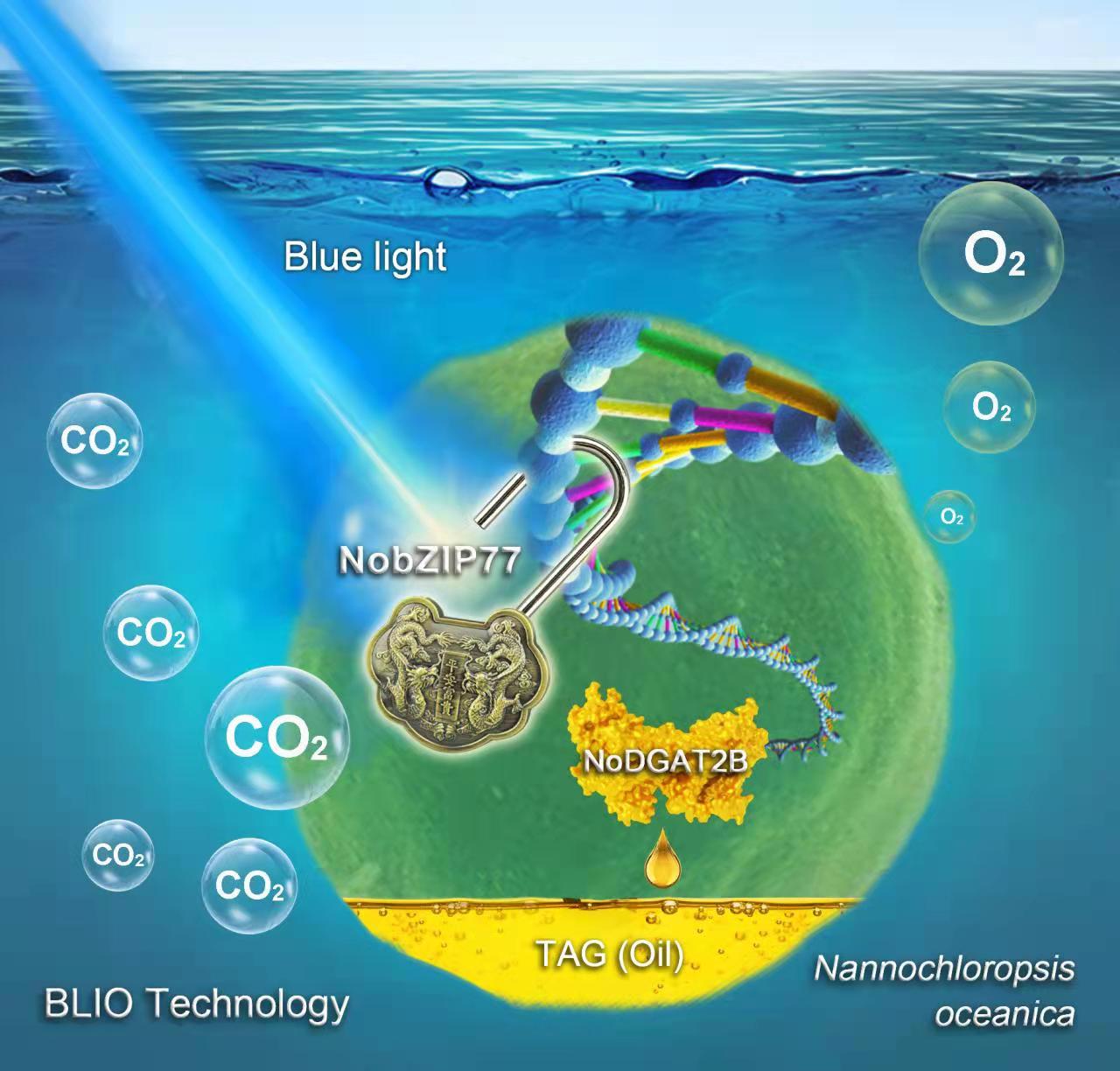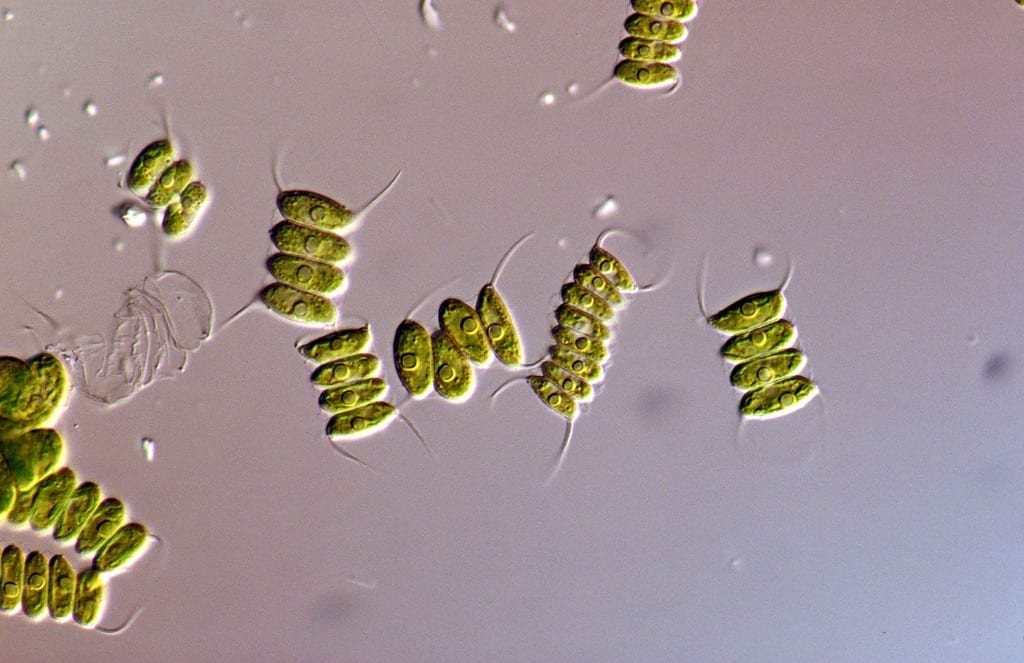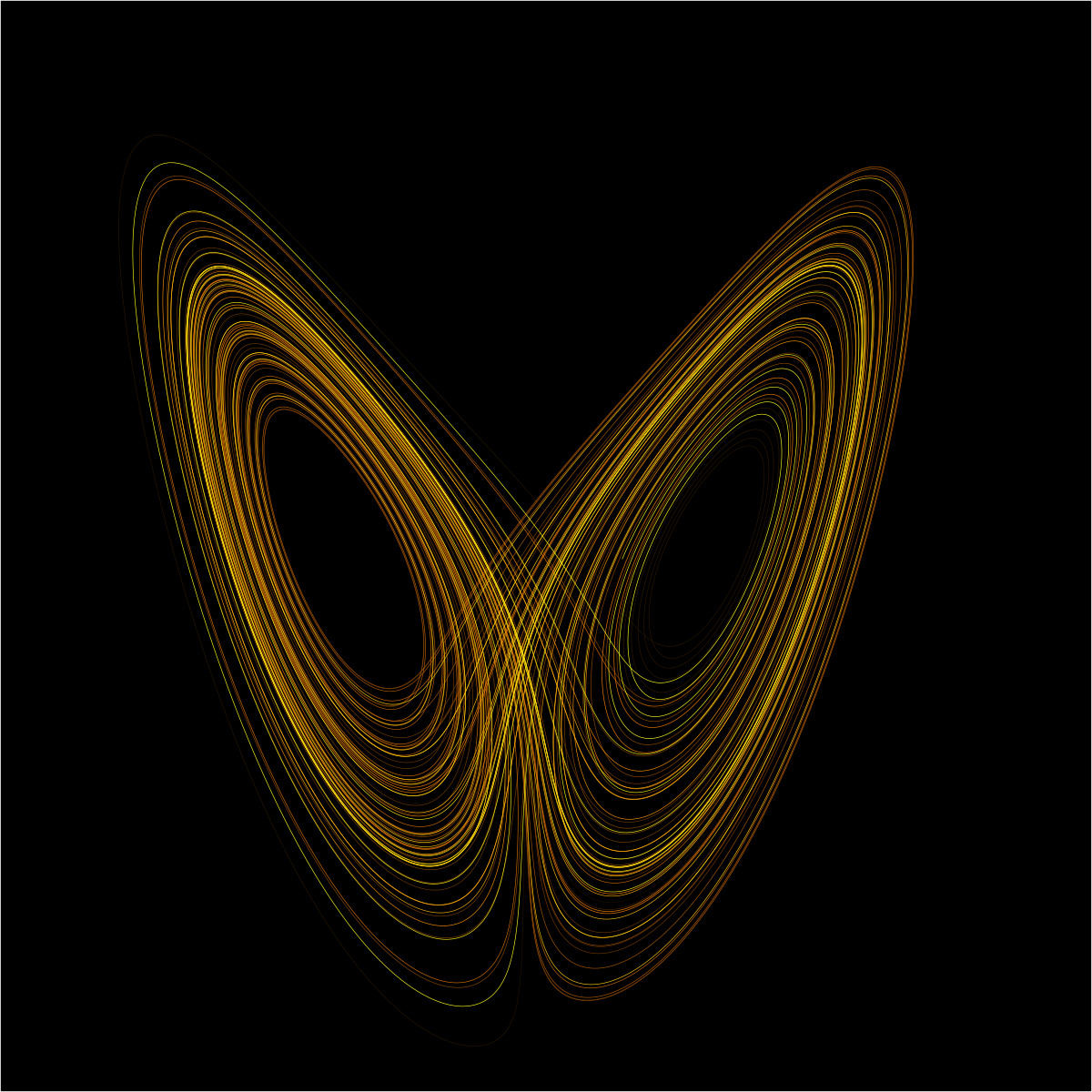
The BLIO technology explores a “genetic switch” to unlock oil production in microalgae.
(Image by LIU Yang and ZHANG Peng)
Microalgae, algae that cannot be seen by the naked eye, absorb carbon dioxide and produce oils that can be used as biofuels. These biofuels, which can be carbon negative, offer promise as an alternative to conventional fossil fuels. However, the biological processes that allow these microalgae to produce oils are not fully understood.
Now, a research team led by Prof. XU Jian from the Qingdao Institute of Bioenergy and Bioprocess Technology (QIBEBT), Chinese Academy of Sciences (CAS), has discovered a genetic sensor of blue light that regulates oil synthesis in an industrial microalga, and explored this discovery to double the microalgal productivity of oils.
They proposed a new technology called Blue-Light Induced Oil synthesis (BLIO), which has major implications in microalgae-based conversion of carbon dioxide to biofuels.
Their findings were published on March 29 in Nature Communications.
In the oil-producing algae, called oleaginous microalgae, environmental stresses such as nutrient deprivation, high light or heat typically cause the oil to accumulate. These high energy density oils are triacylglycerols (TAGs), precursors for biodiesels. Microalgae are promising feedstock for TAG production due to their rapid growth and high oil contents.
Scientists have long known that oil production is part of the response of microalgal cells to environmental stresses, but exploiting this knowledge for greater oil productivity is hard because they lack a full understanding of how the process works.
The QIBEBT research team has long been looking for a better way to induce the oil productivity in microalgae. “New environmental stimuli that allow efficient and precise control of cellular TAG assembly yet without compromising biomass productivity are highly desirable,” said ZHANG Peng, a postdoctoral researcher at Single-Cell Center of QIBEBT.
The team has been studying the industrial oleaginous microalga Nannochloropsis oceanica, a type of marine microalgae that can produce high-value oils from sea water and CO2, for over a decade.
Their long journey to search for a new stimulus that they can control more precisely for oil production eventually led them to blue light. The research team discovered a previously unknown “BlueLight-NobZIP77-NoDGAT2B” pathway.
When nutrients such as nitrogen are abundant, a blue-light-sensing regulator called NobZIP77 would turn off TAG production in the microalga, by inhibiting the expression of oil-producing enzymes such as NoDGAT2B. “However, when nitrogen is depleted, chlorophyll a which normally absorbs blue light is reduced, resulting in more blue light entering the nucleus where NobZIP77 resides in. The increased exposure of NobZIP77 to blue light unlocks its inhibiting effect on TAG-synthetic enzymes, and unleashes NoDGAT2B to produce more TAGs.” ZHANG Peng explained.
“Such a concise mechanism that links light sensing to TAG synthesis was not previously known, thus is quite exciting,” added XIN Yi, an associate professor at Single-Cell Center.
Based on these findings, the team invented BLIO technology, in which the NobZIP77-removed microalga is first exposed to white light and then to blue light. This results in a level of peak productivity of TAG that is double of the unmodified microalga under constant white light.
“Light quality is a highly desirable tool of control. Thus, our discovery in this study points to a new direction in feedstock development, photobioreactor design, or bioprocess control,” said XU Jian, Head of Single-Cell Center and the senior author of the study.
The researchers believe this genetic mechanism is widely present in microalgae and higher plants, and envision a future when the BLIO technology and its variants contribute to circumstances where highly efficient conversion of CO2 to oils or other macromolecules is required.
Original Article: Scientists Explore a Genetic Sensor of Blue Light to Double Oil Productivity in Industrial Microalgae
More from: Chinese Academy of Sciences
The Latest Updates from Bing News & Google News
Go deeper with Bing News on:
Microalgal productivity of oils
- In America’s Biggest Oil Field, the Ground Is Swelling and Buckling
Land has subsided by as much as 11 inches since 2015 in a prime portion of the Permian Basin, as drillers extract huge amounts of oil and water, according to a Wall Street Journal analysis of ...
- U.S. Oil And Gas Production Are Ahead Of Last Year’s Record Pace
Last year marked a record for U.S. oil production with daily production of 12.93 million barrels per day (BPD). This year, production is running ahead of that pace.
- Murphy Oil (NYSE: MUR)
Murphy Oil Corp. is a holding company, which engages in the exploration and production of oil and natural gas. It operates through the Exploration and Production and Corporate and Other segment.
- Chevron's Strategic Advances In Oil Production Overshadowed By Q1 Revenue Miss
Oil giant Chevron reported Q1 2024 revenues of $48.716B, down 4.1% YoY, beating EPS estimates. U.S. upstream earnings increased, while international upstream and downstream earnings fell. CVX returned ...
- Chevron posts Q1 profit beat with oil production gains
Oil giant Chevron Corp beat estimates for first-quarter profit on Friday as higher production volumes in the U.S. helped offset a hit from weak natural gas prices and fuel margins. The second largest ...
Go deeper with Google Headlines on:
Microalgal productivity of oils
[google_news title=”” keyword=”microalgal productivity of oils” num_posts=”5″ blurb_length=”0″ show_thumb=”left”]
Go deeper with Bing News on:
Blue-Light Induced Oil synthesis
- blue light therapy
but what about when you want more blue light? Maybe you want to convince your body to stay awake to pre-acclimate for a trip across time zones. Perhaps you work or live in a place that doesn’t ...
- Top 8 Best Blue Light Blocking Glasses in 2024
With more people spending greater amounts of time staring at screens, there’s been an upsurge in demand for blue light blocking glasses. These specially designed eyeglasses are made to block or ...
- The color of sleep: Decoding the impact of blue light on circadian rhythm
Exposure to natural light during the day regulates the circadian rhythm, influencing alertness and promoting better sleep at night. Blue light has been shown to negatively affect sleep, but a new ...
- Best Blue-Light-Blocking Glasses of 2024
Though research supporting blue-light glasses for eye health isn't there, some people who work with screens a lot may find a benefit. Laurie Kelso is a health and wellness writer for CNET living ...
- Blue light can damage skin
As compared to pigmentation induced by sun’s UV radiation, blue light-induced pigmentation tends to be darker, more sustained and more resistant to treatments. This has more pronounced ...
Go deeper with Google Headlines on:
Blue-Light Induced Oil synthesis
[google_news title=”” keyword=”Blue-Light Induced Oil synthesis” num_posts=”5″ blurb_length=”0″ show_thumb=”left”]










